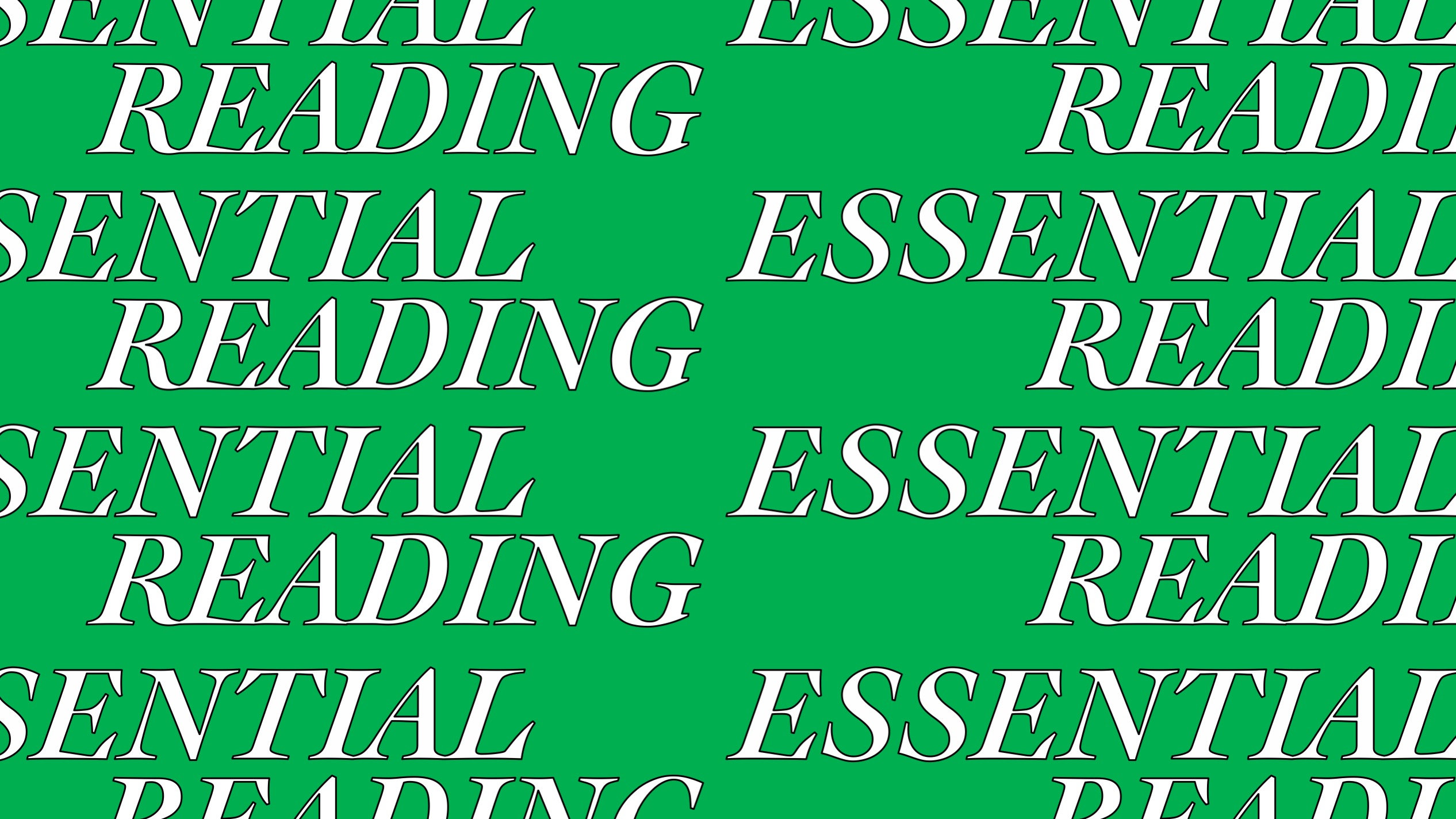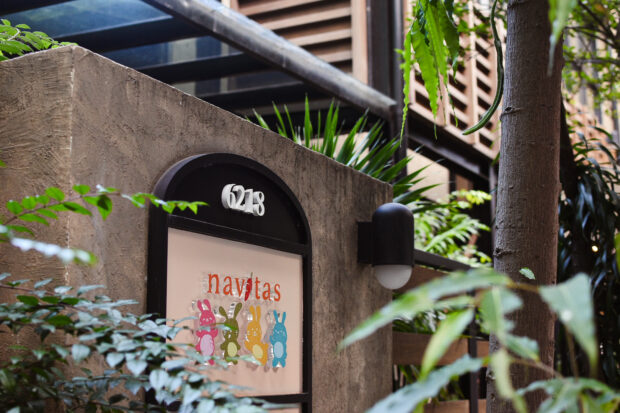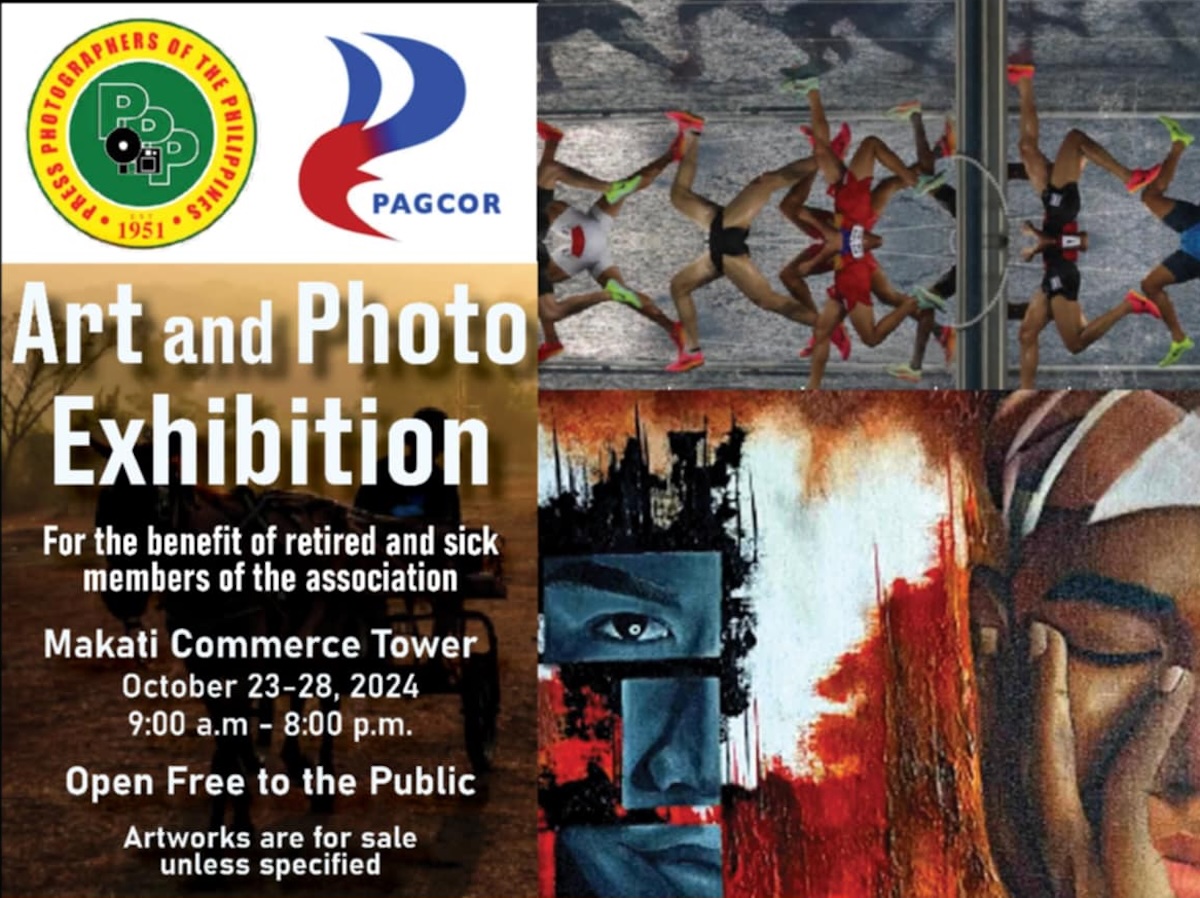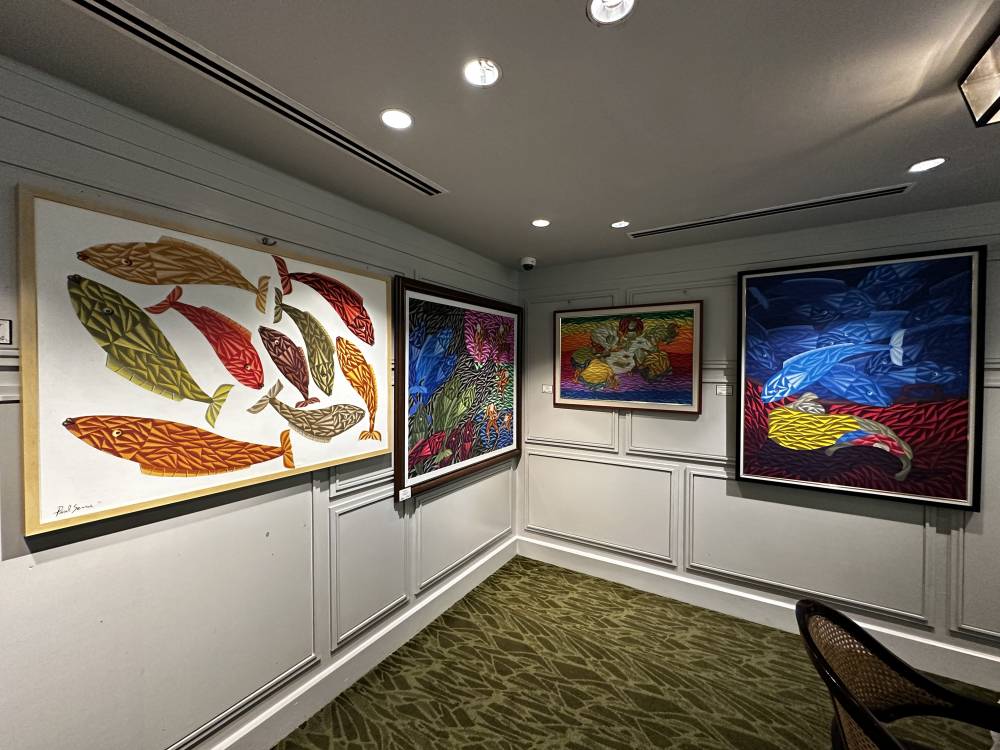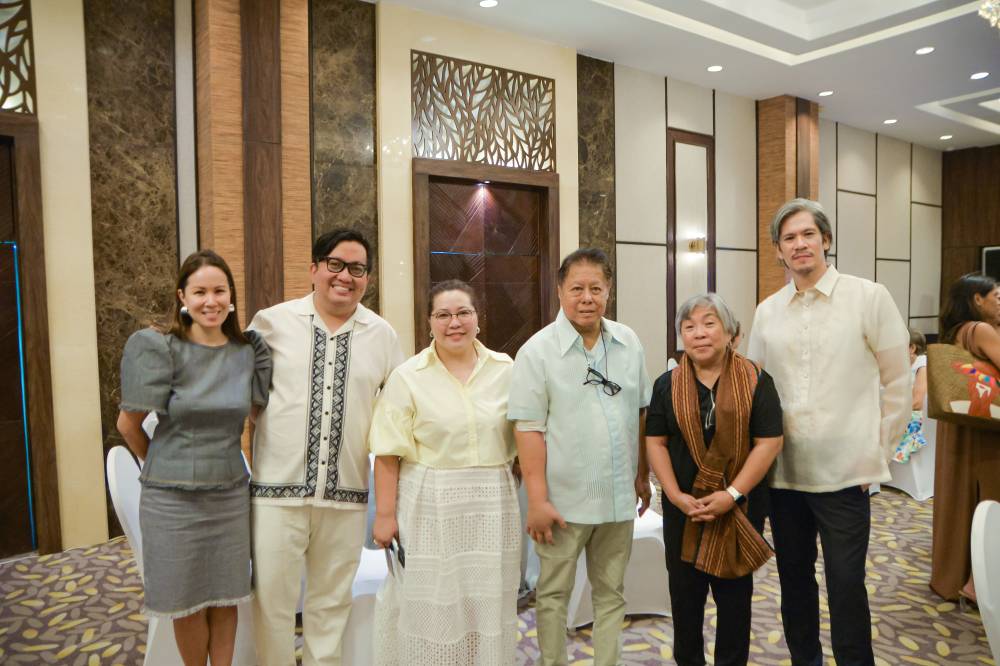In this series we ask bibliophiles, prolific readers, and men and women of letters about their book consumption habits and their top picks for essential reading.
“I am a fan of re-reading. I find it interesting to revisit what the version of me when I first read something obsessed over or found worth remembering. I keep going back to a hardcopy of Italo Calvino’s Difficult Loves, a collection of short fiction. I last finished it last month. My copy is the 1984 translation, which had in its jacket an amusing line drawing of two people leaning into each other, back against back, their heads fusing into one disproportionate blob. I got my copy from an online seller of books and on its title page is a dryseal of one Marinchi Enage from Makati City. It is a very old copy: the pages of the book bloom with rust and the jacket has small tears.
“There are underlined passages in my copy although I do not remember if I was the one who penciled them. Perhaps it was Marinchu, but I won’t be surprised if it were me. In one story about a near-sighted man, Marinchu underlines: ‘All this newness, however, only underlined and made more recognizable what was old.’ I am near-sighted and I am a man. There is a strong case to be made about me underlining this passage.
“My favorite story in the collection is ‘The Adventure of a Reader,’ which is the story of Amedeo. Amedeo has ‘reached the age when rereading a book—for the second, third, or fourth time—affords more pleasure than a first reading.’ In the story, Amedeo went to a cove to read, meets and flirts with a lady who peels him away from his book. The story ends with a sexual encounter, the day about to end and the lady asking Amedeo to accompany her for a last dip. Before obliging, Amadeo counts the pages left before he finishes his book.
“I have been considering this book to be a manual for my thirties—although most characters are presumably white and heterosexual. There is something about the characters in the book who are painfully conscious of their intelligence and maturity, and yet how these do not really guarantee that they will make the right decisions every time.
“I am currently reading Mark Anthony Cayanan’s manuscript for their poetry collection forthcoming from Giramondo in 2021, titled Unanimal, Counterfeit, Scurrilous. Mark is an incredibly patient, attentive, and generous reader, a wonderful professor, and has been one of my first, if not my first, editors, and who also wrote the blurb for my first chapbook in 2012. They have a keen ear for sound and syntax, and theirs is an attentiveness to language of which I have always been a fan.
“I have a battered copy of Mark’s Forfeit, a small zine of sonnets that I keep picking up whenever I get tired of writing. The book was published in 2015 by the Youth and Beauty Brigade a small press based in Quezon City. Here is my favorite poem in the collection:
Be with the ordinary body
When sun-stung awake by summer, I desire ever
to never reach for you. The body, I hope one day to say,
accidentally discovered by hunters. Green-yellow stomach,
sunken face, the sharp flat rock a nothing to the cornea,
my love the breadth and taste of fungi on a felled tree.
Find me please after summertime when my chest
is an alcove of secrets and my skin a soil of blisters.
To the southwest of history is where we are meant to be.
A mass of beauties buried one upon another: this done in
by kick of birth, that drowned in the liver. Our one
river. There is a perfect cold, not liable to time, and maybe
we are hair growing long after the body forgets itself. Only
listen to me when I long to vanish into the third person: rust
open and let her be ligament, bone, teeth, bluster, ache nail.
“I write for a living. Curatorial texts, art historical researches, reviews of exhibitions—I read a lot. I try to distinguish between casual reading and readings I need for my work. When I get tired of writing, I usually pick up a book I have already read, step away from my desk and read on the bed. I like reading early in the morning and late at night. In the afternoons I try to write. At any given time, I have 8 to 10 books on my desk for reference. I have a smaller pile of books by my bed—not work related (some books from this pile: Anne Carson’s Plainwater, Calvino’s Difficult Loves, Paul Celan’s Selected Poems, Peter Gizzi’s In Defense of Nothing, George Oppen’s New Collected Poems). I usually read several books at a time and get titles at random from this small pile, especially when I hit a writing slump.
“I am a product of the public elementary school system and whenever we get books I read in advance and read aloud in my room. I used to pretend like I was a newscaster and read the instructions in chapter summary tests, mimicking their tone. Since books in the public schools are handed down to generations upon generations of students—lent at the beginning of the school year and returned after, these copies were always battered, sometimes missing or had frayed pages. You get the newer, better looking copies when you are in the star section, and (a strategy!) you get to choose which ones you get if you volunteer to carry the books from the school storage room to your classroom. My sister helped me cover my copies. We inserted a sheet of white paper between the cover and the plastic so you can put your name and your section on the books without damaging them. I am convinced this is where I got my fetishistic attachment to the materiality of my books: I don’t dogear, and if I bought the book new I do not write on its pages. Although, in my last year in elementary I was called to the guidance office because I drew dozens of eyes on Apolinario Mabini and our class valedictorian called me out and reported me. (Luckily, our guidance counselor was also our English teacher, and she loved me, so no parents needed.)
“For the most part I read by authors. If I liked an author I read all their books. And sometimes I read the books of whoever wrote blurbs for the book I am currently reading. Sometimes I read reviews of books I liked and look for the books also mentioned in the review. Most of the time I find people who liked the same book as I did and ask for their recommendation. I rarely pick up a new title on my own.
“Some local writers [who have had the most significance to me and my work]: Conchitina Cruz, Mark Anthony Cayanan, Adam David, Vincenz Serrano, Marlon Hacla, Patrick Flores, Michelle Esquivias. Most of them are poets. Adam David is a komikero and does exciting experiments with texts and books. Patrick is an art historian, critic, and curator. Michelle is my co-editor in a now defunct online journal transit. All of them are very attentive to language and all of them do things aside from writing and that is something I admire.
“Some international writers that I keep coming back to: Anne Carson, Elizabeth Willis, Rosmarie Waldrop, Lisa Robertson, Jenny Boully. Mostly poets and essayists.”
_____
CARLOS QUIJON, JR.’S ESSENTIAL READING PACK
“Conchitina Cruz’s Dark Hours (UP Press, 2006) is a collection of prose poems on the city and the first nonrequired book I ever bought with my own money (Php 150!). I remember how clear the images in the book were to me when I first read it as a freshman and how it captured a tone that I wanted to capture in my own writing as well. For a time, a generation of literature, creative writing, and journalism students in UP were inspired by this book and we wrote about cities, the pavement after the rain, bodies. (I was her student in four different classes!) In sophomore year, I tried to have my copy signed, checked the author’s teaching schedule and went to her classroom. While waiting for her to arrive, at the last minute, I got shy and left. I saw her on the way out of the building. I had a backpack but was holding the book in my hand, cover face up, hoping she would notice. I recounted this to her years later and we just laughed about it. (And yes, my copy has been signed.)
“Kritika Kultura’s Anthology of New Philippine Writing in English (Ateneo de Manila University, 2011) is an online anthology edited by Mark Anthony Cayanan, Conchitina Cruz, and Adam David. It was an ambitious anthology of works by young writers who were early in their writing practice—some have published one book but most of us in ther anthology were students. This was a special publication because it treated the work of younger writers seriously, astutely framed itself in a literary historical context, and it gathered a host of unusual and experimental works and practitioners that would not have seen print in the publications in circulation during this time. I have two works published in the volume alongside brilliant writers such as artist-curator-writer Cristian Tablazon, fictionist and lawyer Daryll Delgado, poets Vyxz Vasquez and Pauline Lacalinao (who was just recently shortlisted for the Gaudy Book Prize in Singapore).
“Vincenz Serrano’s When a map is folded cities come closer, When clothes are unpacked cities fall apart (High Chair, 2016) is a wonderful monograph that uses verse, prose, photographs, and which at turns is a love letter to old Manila, a treatise on archive and ruins, psychogeography and lyric poetry, and the plasticity of language and image. This and Vincenz’s earlier works were fundamental in my interest in the essay form and how it accomodates a hybrid practice centered on image and text.
“Patrick Flores’s Past Peripheral: Curation in Southeast Asia (NUS Museum, 2008) is the text that introduced me to the curatorial discipline and the artistic ecologies of Southeast Asia. It is also my first encounter with Patrick’s writing, which combines a keen grasp of art history and cultural theory without losing a writerly flair. It took me a while to navigate the complexity of the book but I have read and re-read it a couple of times and have always found something becoming clearer in each reading. Patrick is my thesis adviser (and boss!) and the copy I have is actually loaned from him.
“Lastly, Frisson: The Collected Criticism of Alice Guillermo (Philippine Contemporary Art Network, 2019), edited by professors Patrick Flores and Roberto Paulino, gathers the unpublished criticism of Alice Guillermo (1938-2018), UP Professor Emerita, art historian and critic. The essays in the book are from the 1980s onwards and were originally published in dailies and magazines. This is an important book if you are into art history or art criticism or into the arts in general. Alice is one of our most important critics who paid attention to artistic and cultural discourse without losing sight of a more affective and intuitive relation to sensing art. This is also an important book, alongside Alice’s other collected writings: Image to Meaning (Ateneo de Manila University Press, 2001), Images of Change (Kalikasan Press, 1988), and The Covert Presence and other Essays on Politics and Culture (Kalikasan Press, 1989), because it assembles and annotates an aspect of the rich history of cultural criticism in the country, which younger generations of writers usually overlook in their declarations of an impoverished local critical traditon.” — CARLOS QUIJON, JR. as told to JED GREGORIO
Carlos Quijon, Jr. (b. 1989, Manila) is an art historian, critic, and curator based in Manila. He is a fellow of the research platform Modern Art Histories in and across Africa, South and Southeast Asia (MAHASSA), convened by the Getty Foundation’s Connecting Art Histories project held in Hong Kong and Dhaka. He writes exhibition reviews for Artforum He is an alumnus of the Ateneo National Writers Workshop in Manila and the inaugural Para Site Workshops for Emerging Professionals in Hong Kong in 2015. He was a scholar participant of the symposium “How Institutions Think” hosted by LUMA Foundation in Arles in 2016. In 2017, he was a research resident in MMCA Seoul and a fellow of the Transcuratorial Academy both in Berlin and Mumbai. He curated Courses of Action in Hong Kong in 2019, a will for prolific disclosures in Manila and Minor Infelicities in Seoul in 2020, and together with Singapore-based curator Kathleen Ditzig, will be curating a series of exhibitions and programs in Singapore and Manila in 2021 on the histories of Afro-Southeast Asia solidarities.

